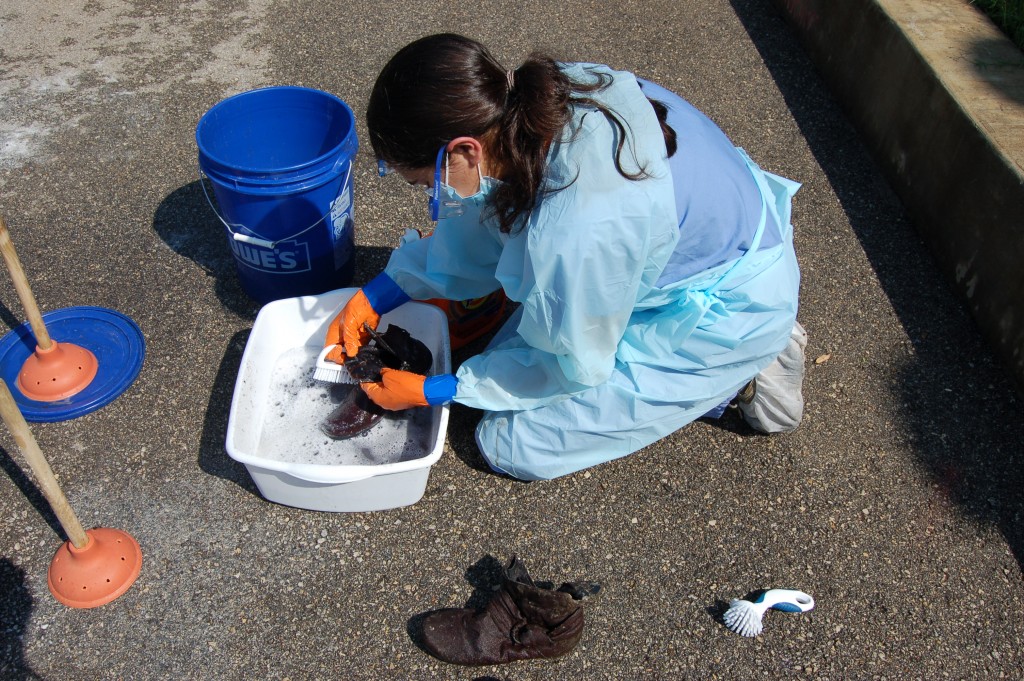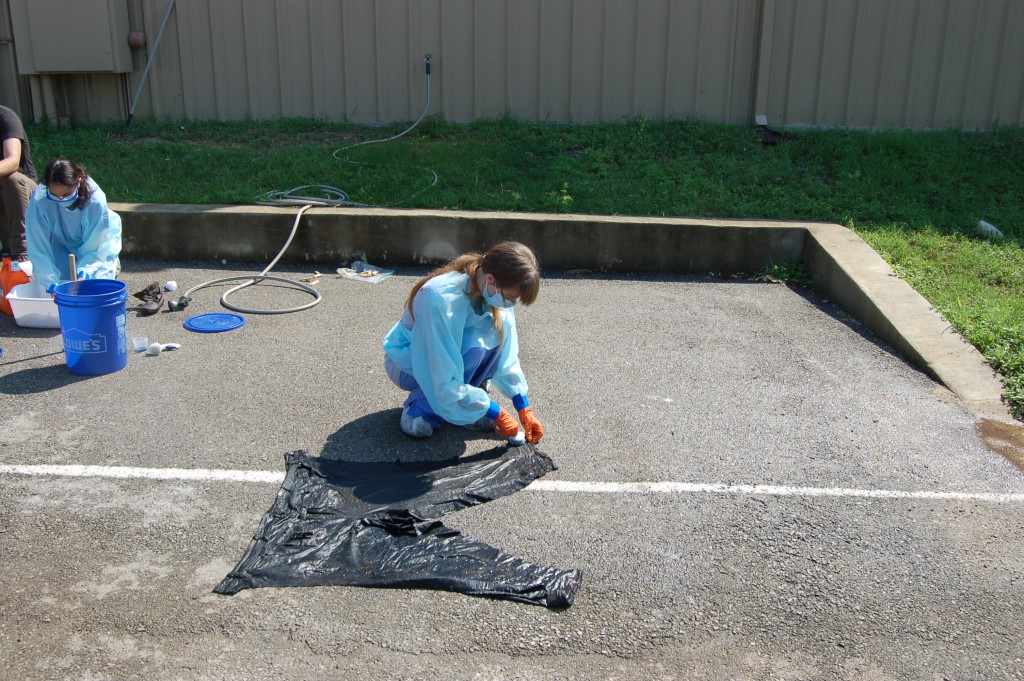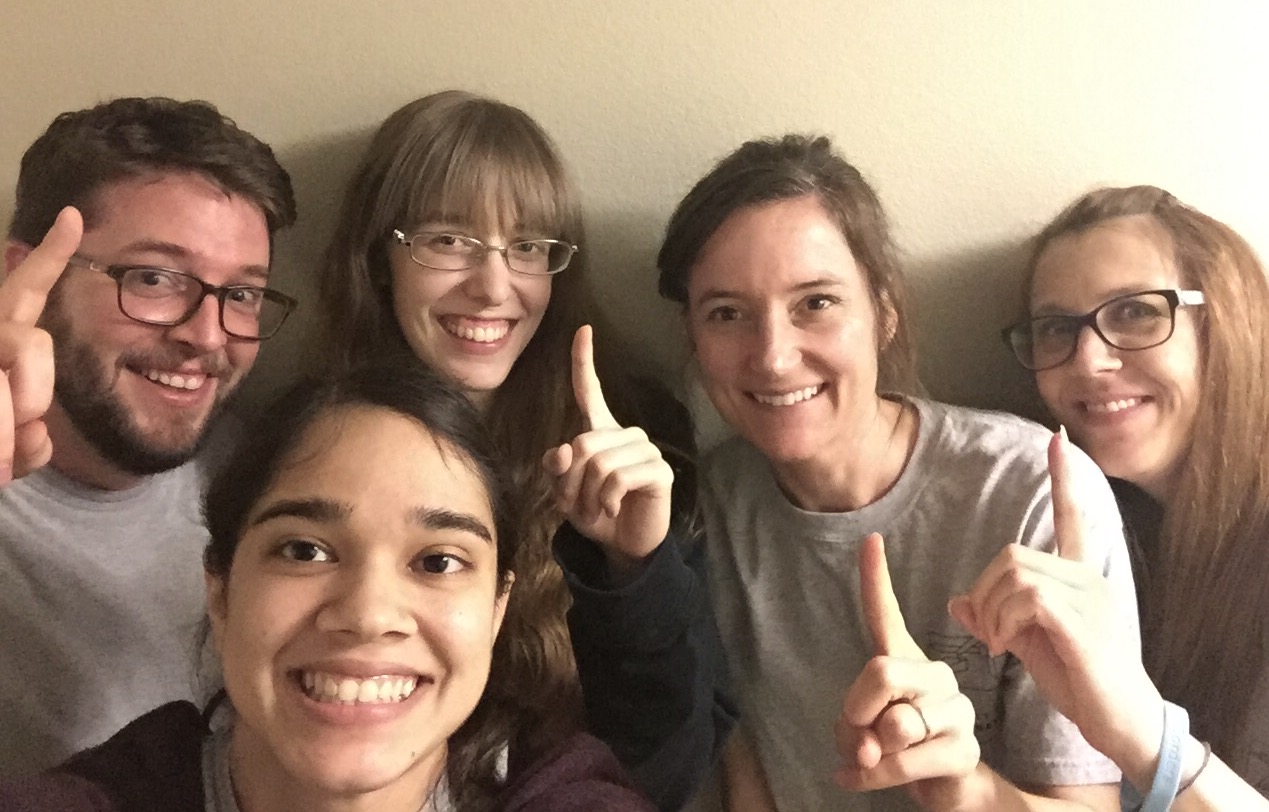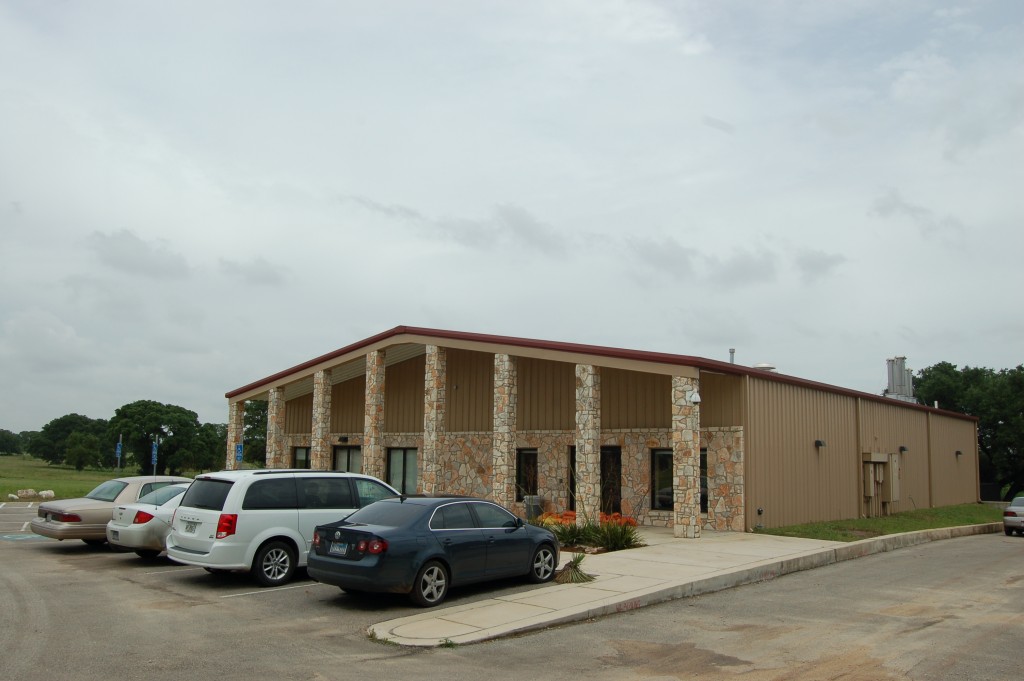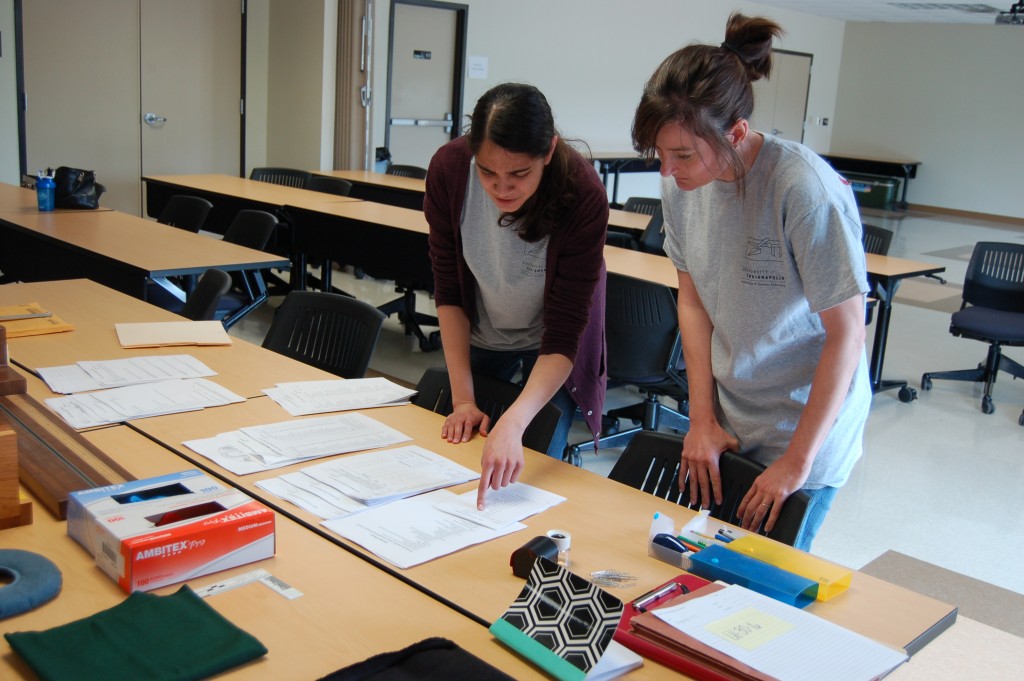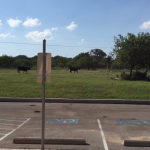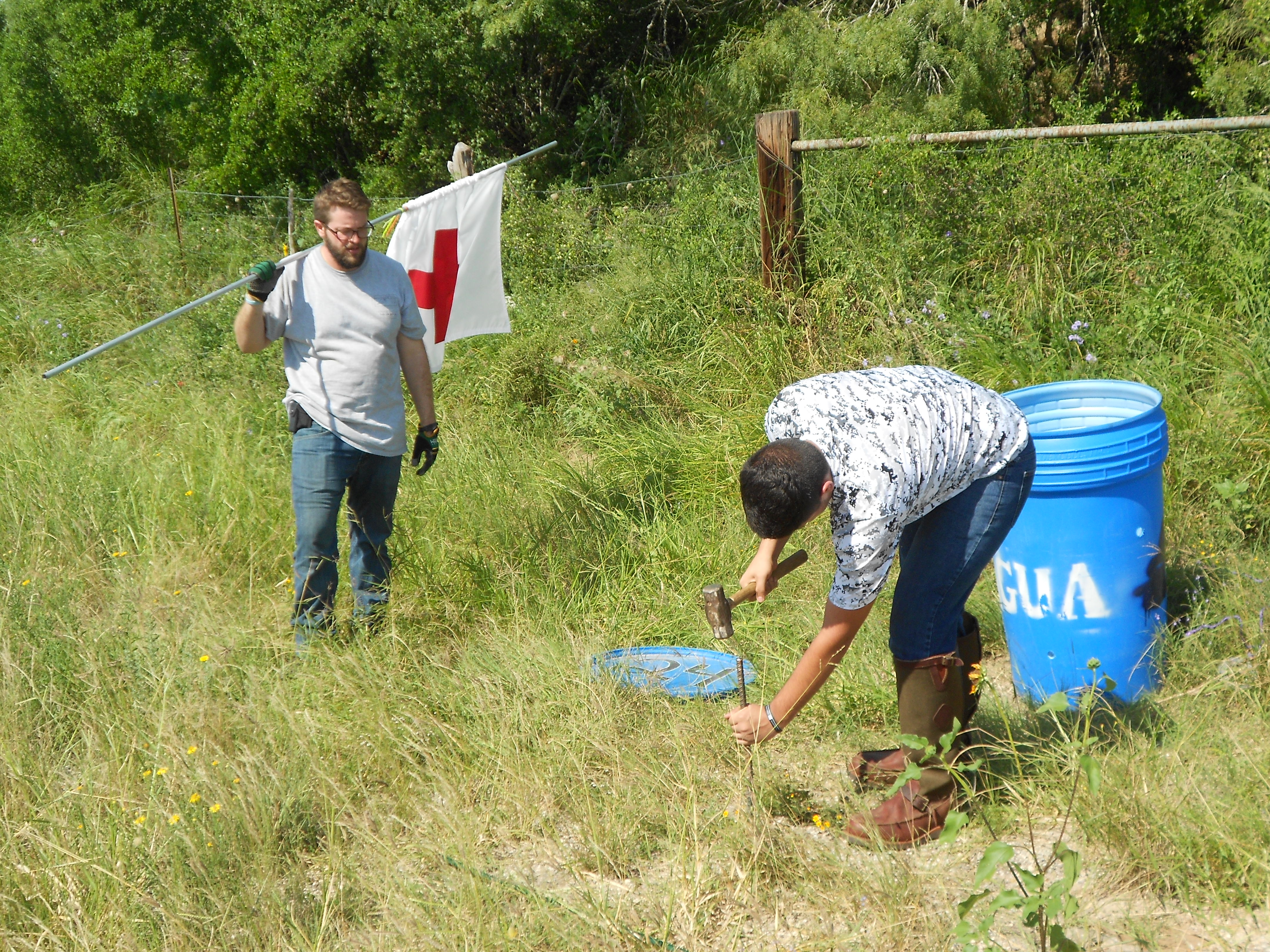Today I got the chance to do something a little different than what I’m normally used to. Last year I spent most of my time at Texas State University doing skeletal analyses. This week so far, we got the opportunity to participate in body intake, help do dental analyses with a forensic odontologist, and now work with personal effects. When each set of remains is processed, the clothes and other personal items are collected and documented. It’s interesting to see what items the migrants bring with them. They bring pictures of their families, letters from home, money, tooth brushes, and prayer cards. They write phone numbers on the inside of their clothes and tuck messages into their shoes.
Our task today was to process the personal effects. Since we take many of the personal effects directly off of the remains themselves, they need to be washed thoroughly first. Helen and I worked with Courtney, a Texas State student, to wash the effects. We set up a work station outside in the parking lot of the Osteological Research and Processing Laboratory (ORPL). Our tools were two buckets with plungers that worked kind of like little washing machines, scrub brushes, and tons of Tide laundry detergent. We were geared up in scrubs, plastic aprons, gloves, and goggles. We had two bags of personal effects to clean. One bag had a shirt and pants, while the other had socks, shoes, and a few other smaller items. All of it was covered in decomposition fluids and needed a good scrub.
It took us a while to clean the effects. By the end of it, we were soaked in water, sweaty, and tired. When we were done, we hung up the personal effects on a clothes line and let them dry in the sun. Some of the more fragile items were taken inside to dry. Natural fabrics, like cotton, will decompose faster than artificially made fabrics like polyester. We had one cotton item that was beginning to fall apart and needed to be handled carefully.
Working with personal effects helps humanize the individuals we are trying to help identify. As forensic scientists we need to be a little detached in order to do our jobs properly, but seeing these effects reminds us that the bones are people with families that loved them. Once the personal effects are dry, they are then photographed and documented. Eventually they will end up on a missing persons database as part of a missing individual’s profile that may led to their identification and sending them home to family. Hopefully, I will get another chance to work with personal effects.
